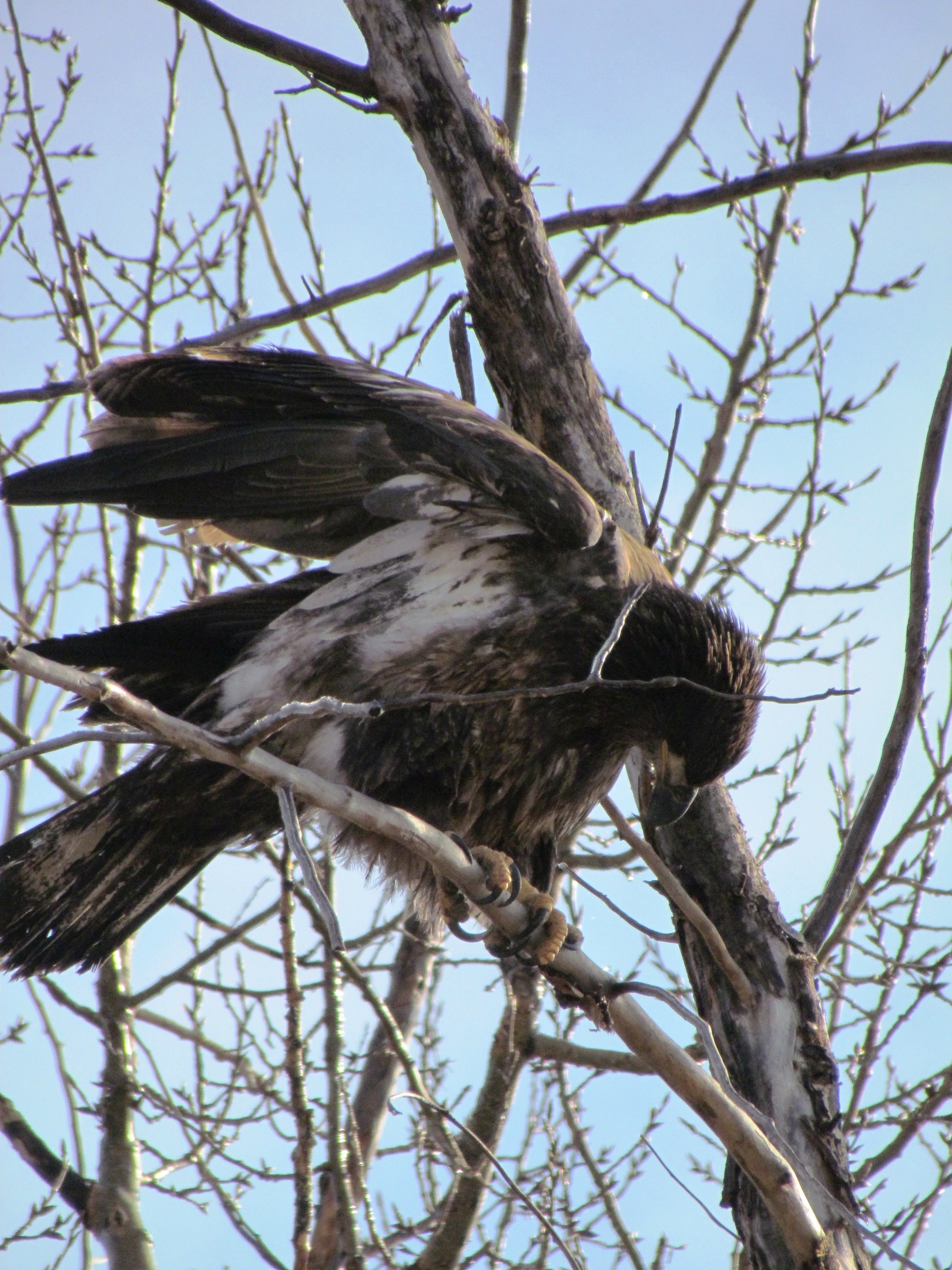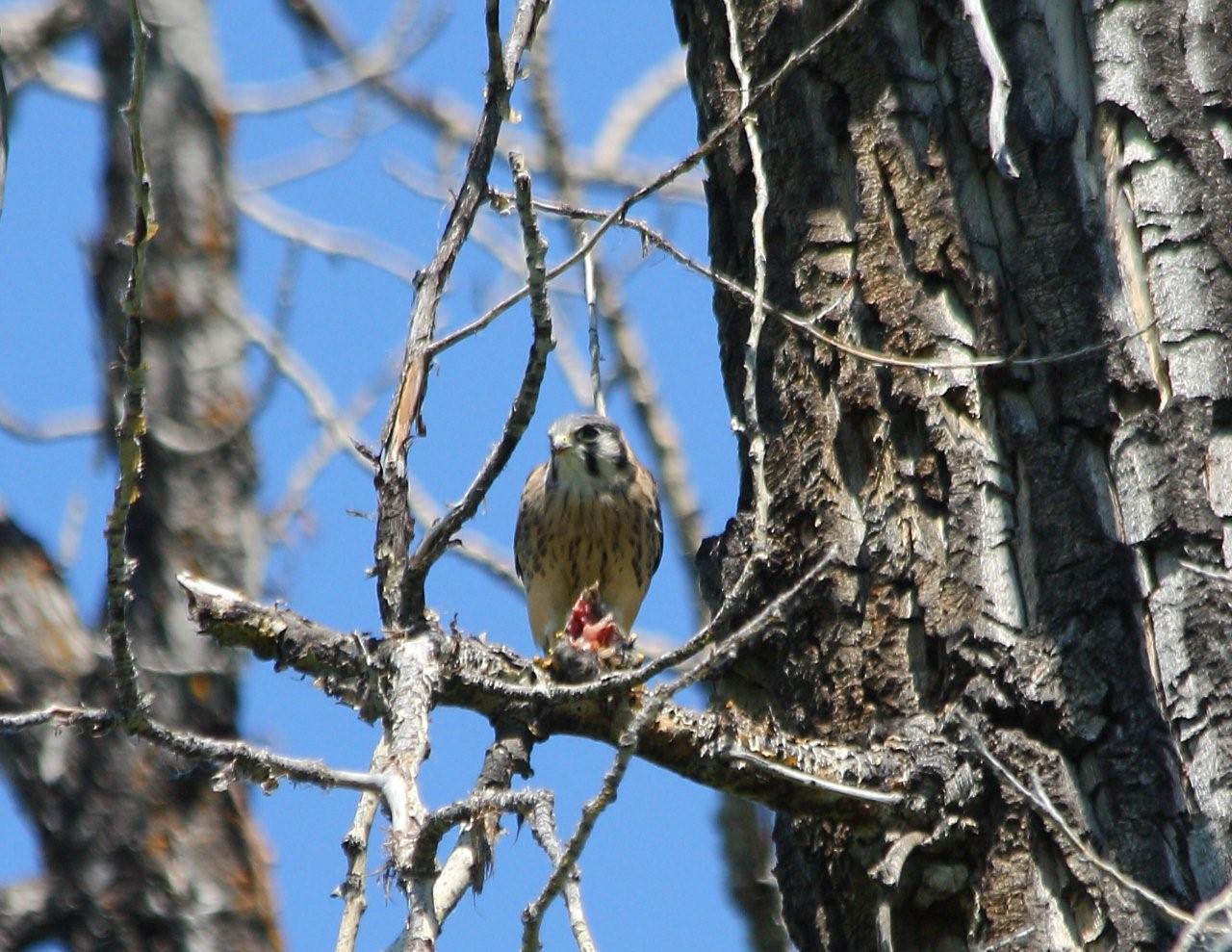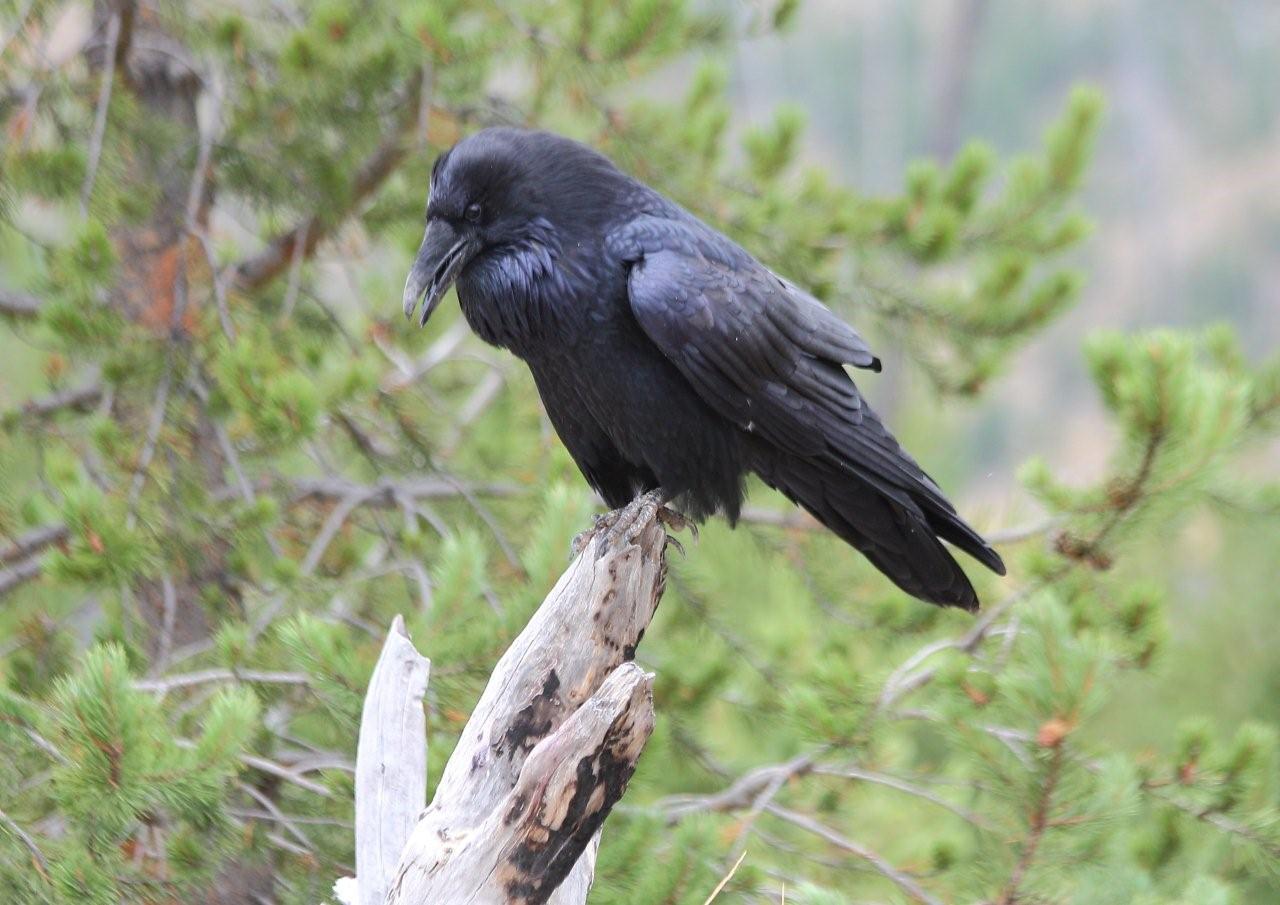Marg Matheson and Alan Plumb are new to the hobby of photographing birds, and sent us some juvenile Bald Eagle pictures. They are quite proud of these shots, and have every right to be! Click to enlarge.
Archives
Falcon Identification
We received some absolutely stunning, stupendous photos of a falcon from Jim Walling. These were taken on Dec 30, mid afternoon along the Bow River at the Inglewood Bird Sanctuary. He only managed to capture these three shots before the bird was gone.
Two of us here at the blog identified it as a Prairie Falcon, based on the moustachial line and the dark bar on the wing lining. However, neither of us have even seen a Prairie Falcon that is this light in colour. Some web research turned up a number of similar pictures of a Saker Falcon, a European bird used in the art of falconry.
Do we have any falconers reading this blog?! Or is this an unusually white Prairie Falcon? Your comments, please!
Posted by Pat Bumstead
Update January 9
What a dearth of comments on this bird. None of us are confident enough in our raptor ID to take a stand, but fortunately we have birding experts to give us a hand. Gus Yaki said this is a second year Prairie Falcon, and Gord Court also said this is a juvenile Prairie Falcon. Firm identification, for sure!
Sunday Showcase: Pine Grosbeaks
Rob English took these shots in December right outside his house, resulting in some great pics and a life bird for himself! Rob says, “the pictures on the ground are of one who had crashed into the neighbor’s window. The first one is right after she hit and the last one was just before she was flying again. I watched her for about 45 minutes before she flew just to make sure the cats didn’t get her. The robin was hanging out in the tree with these guys. There must have been about 15 female grosbeaks and only one male.” Click to enlarge.
Red-bellied Woodpecker Photos
As many of you know, there has been a Red-bellied woodpecker living in George Lane Park in High River for the last few weeks. Blog reader and photographer Duane Starr visited the park on December 17, and took a series of excellent photos of this rare bird.
You can see his collection of Red-bellied woodpecker photos on his website. Just click any of the thumbnail pictures on the left to see a larger view of the photo.
Once you’ve enjoyed the woodpecker pictures, you must travel on over to his photos of the Great Gray Owl – they are fantastic.
Thank you Duane, for sharing your work!
Posted by Pat Bumstead
Juvenile Raptor Identified
Thank you all for your comments on my yard hawk!
The juvenile Cooper’s/Sharp-shinned conundrum is one of the greatest challenges in bird watching. The species are so similar that often a positive ID cannot be made when you see the bird for just a few minutes. In the winter months, you can add juvenile Northern Goshawk to the possibilities as well. With the additional help of photographs that can be pored over, feather by feather, it then becomes a matter of working your way through the bird guides.
I write for three different bird blogs, and when I was lucky enough to capture this beautiful hawk in pictures, I posted to all three, leaving the identification up to the readers. Guesses included Merlin, Swainson’s, Osprey, Cooper’s Hawk, Sharp-shinned and Northern Goshawk.
Consensus is…a Sharp-shinned hawk. Here are the reasons given.
- Young sharpies have yellow eyes, while young Coopers have light yellow to almost pearly white eyes. Your bird has distinctly yellow eyes.
- based on size, as compared to the shepherds hook and feeder, the bird seems Sharpie-sized
- coarse brown streaks on the breast and belly
- thinner legs than on a Cooper’s and narrow white tip on the tail feathers
- smaller head and neck than a Cooper’s
- pale eyebrow, narrow white tip on tail
- Coopers have thicker white band on tail tip
- Immature Cooper’s have whiter, more finely streaked breast
- Sharpie’s have brown upper parts with white spots along scapulars
- Cooper’s tend to have warmer brown napes, where yours has a darker nape
- Sharp-shinned Hawk, based on the straight tail bars
- wing-tips in relation to the length of the tail – Sharp-shinned Hawks wing-tips end just posterior to the hips.
- undertail coverts on Goshawk have dark streaks
Now that I’ve gone through all this, I have absolutely no confidence that next time I see one of these birds, I’ll be able to identify it! They are just too tricky, but do provide a wonderful challenge for birdwatchers to tackle. However, I did find a fantastic website to help with the Cooper’s Hawk vs Sharp-shinned identification puzzle, so next time I’ll know where to look.
Posted by Pat Bumstead
Juvenile Raptor Identification
Do you like a birding challenge? This beautiful raptor visited my southeast Calgary yard late in November. I thought I would post these pictures without identifying the species, to give you a chance to test your raptor identification skills. Leave us a comment below, and tell us what you think it is.
Posted by Pat Bumstead
Sunday Showcase: American Kestrels
Bird Profile: Bohemian Waxwing
A rush of wings, followed instantly by high-pitched trills break the silence. It is a cold, wintry scene, snow falling slowly from the never-ending sheet of clouds that blanket the sky in a gloomy grey. Standing still, nothing is to be heard; no cars, no people, and, above all, no birds. Just when it seems as though the entire world has gone into a peaceful slumber, the calm is broken by the sound of nature.
When they descend in hundreds, berries don’t last long at all. These birds are highly social and travel tight together, descending en masse on fruit bearing trees, where they proceed to rapidly consume thousands of berries. A very hardy bird, the Bohemian Waxwing toughs out the frigid winters of northern latitudes, enduring harsh conditions.The waxwing is both gregarious and elegant with a slick crest, and soft, silky plumage; it is deemed attractive by many. Named for the red, drop-shaped, waxlike tip on their feathers, this bird has warm grey-brown plumage, a black patch through the eye and a yellow-tipped tail. Bohemian Waxwings are berry aficionados and during winter, survive on the fruit of trees such as mountain ash and juniper, but also eat saskatoon and choke berries. Such a heavy reliance on one source of food can greatly affect a birds population and will cause much fluctuation. If there is a high population one year and a low fruit crop the same year, many waxwings will disperse in winter further south out of their regular mapped range. These years are known as irruptive years and are cherished by southern birders who do not usually get the opportunity to observe these birds.
I love witnessing large flocks of Bohemian Waxwings, it is possible to hear the whir of thousands of wings as they land, the twittering as they communicate endlessly, and the soft thud of berries as the fruit falls into the snow below, dropped by a careless tug from the beak of a waxwing. Sometimes, after the flock has left, the snow will be littered with bright red berries. Then as cars and people pass over the fruit, the snow will be stained a rose color, evidence of the masses of birds that banqueted there.
Remember next time you are shoveling snow in -30 degree weather; you are privileged in that you can witness this elegant species brightening up the dull grey day. These birds are truly northern and hardly extend into the U.S. They are definitely one of the things I will miss most about Calgary winters.
Posted by Matthew Sim
Sunday Showcase: Common Raven
More stupendous shots from Rob English, who commented that you rarely see photos of these guys. These shots were taken in Yellowstone National Park in September of this year. As a huge fan of all members of the Corvid family and someone totally in love with ravens, I sincerely thank Rob for these photos. What a handsome bird!! Click to enlarge.
Posted by Pat Bumstead, total raven fan






















































